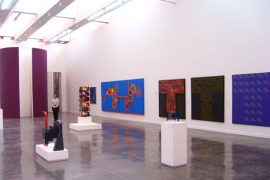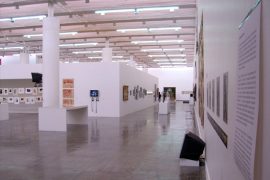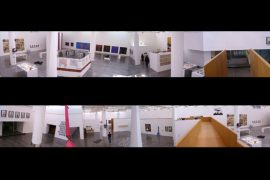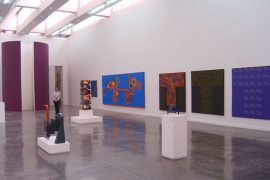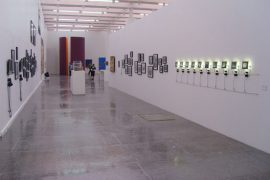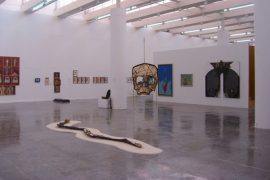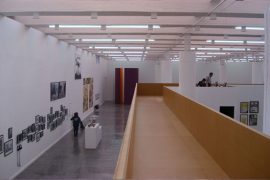Museo Universitario de Ciencias y Artes (MUCA) UNAM
Ciudad de México, México
Curaduría: Olivier Debroise, Cuauhtémoc Medina, Alvaro Vázquez Mantecón y Pilar García
Noviembre 2006
La era de la discrepancia. Arte y cultura visual en México 1968-1997 fue la primera revisión histórica, académica y crítica de las búsquedas artísticas que se produjeron en los márgenes de las corrientes dominantes del periodo en cuestión.
Se trató de una muestra que destacó momentos claves en los que artistas de diversas generaciones y provenientes de distintos horizontes culturales, en desacuerdo con los usos tradicionales del arte y autocríticos de sus propias prácticas, se plantearon transformar política o formalmente el sentido de producir arte interpelando la legitimidad de los soportes tradicionales, las funciones históricas del arte y los abusos de la iconografía.
La museografía se articuló a partir de una gran mampara en “L” a la cual era posible subir para acceder a la zona de documentación de la muestra; este espacio ofrecía además la oportunidad de establecer otra mirada y otra perspectiva de los múltiples soportes que conformaban el cuerpo de la exposición.
Museo Universitario de Ciencias y Artes (MUCA) UNAM
Ciudad de México, México
Curaduría: Olivier Debroise, Cuauhtémoc Medina, Alvaro Vázquez Mantecón y Pilar García de Germenos
November 2006
The Age of Discrepancy. Visual Art and Culture in Mexico 1968-1997 was the first historical, academic and critical revision of the artistic searches that were produced on the edges of the dominating movements during this period.
The museography was planned from a large L-shaped screen which could be risen not only to present the area of source of information but to offer an opportunity to establish another look, another perspective of the multiple pillars that made up the body of the exhibit.
This was an exhibit that makes key moments in which artists from different generations and from different cultural horizons stand out. While disagreeing with the traditional uses of art and self-critical of their own practices, they set out to transform politics and formally the sense of producing art and questioning the legitimacy of the traditional pillars, the historical functions of art and the abuse of iconography.

